July 28, 2024
At the University of Missouri, researchers are blazing new trails for more than just themselves—and that innovative spirit extends to student researchers. Undergraduate engineering students presented their summer research findings at the Office of Undergraduate Research’s Summer Undergraduate Research Forum.
Students participating in National Science Foundation Research Experiences for Undergraduates Sites (NSF REUs) and Mizzou Engineers supported by the undergraduate research fellowship were among the 153 presenters.
Scroll to learn about some of the projects completed this summer.
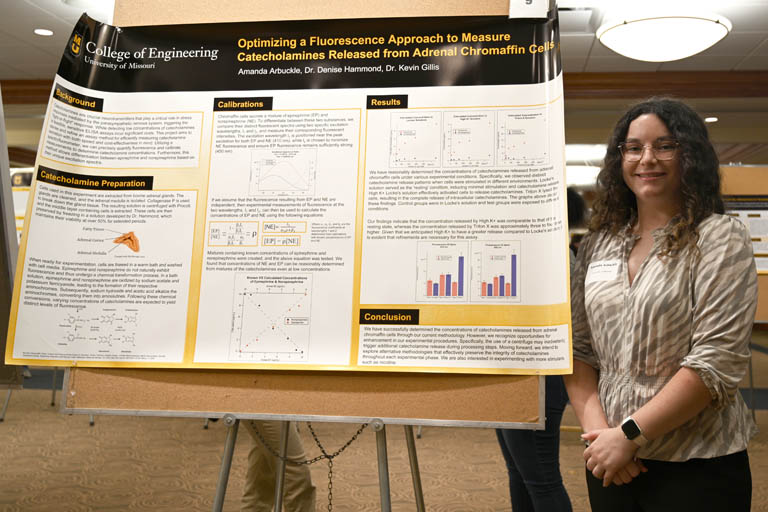
“A lab in a class is a short project; with research, you get to work on one project over a longer period and produce results.”
Amanda Arbuckle
Amanda Arbuckle, a Mizzou biomedical engineering student, is a Columbia, Missouri, native. She spent the summer measuring the hormones released during fight-or-flight responses. This was Arbuckle’s first research experience, and she said her favorite parts of the project were the hands-on work and seeing results from her own experiment.
“This is an emerging field, so it’s been a great eye-opening experience to learn about something this new in the engineering world.”
Robert Criddle

Robert Criddle, a Mizzou civil engineering student working with Hessam Yazdani, spent this summer investigating using graphene as a semiconductor rather than silicone, which is most common. His goal was to create a material that was stronger, more thermally resistant and more durable.
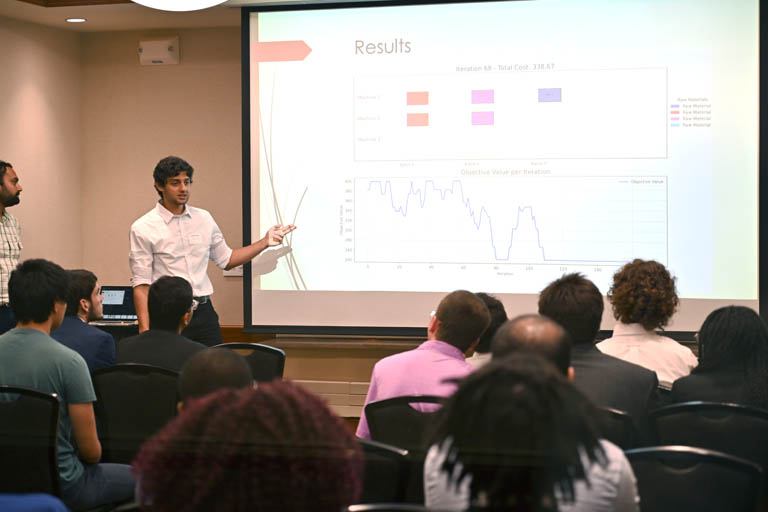
“I learned how to work as a team member, working with my mentor I was able to learn more about topics related to my major.”
Ayhum Asfour
Ayhum Asfour, an electrical engineering student from California, was a participant in the NSF REU: Research on Perspective Analytics for AI-enabled Operations Engineering. His research project focused on additive manufacturing, also known as 3D printing. His goal was to send a 3D printed product to a customer while minimizing cost and fastest efficiency.
“A potential application of this work is a coating on glasses, so that if a lens gets scratched you can heat it up and the scratch will either disappear or get much smaller.”
Will Murphy

Will Murphy is a mechanical engineering student at Mizzou. This summer, his goal was to create a material that is both elastic— able to return to its original form—and hard. You can’t typically achieve both properties at the same time, so he used machine learning to figure out the best combination of three polymers to achieve that goal.
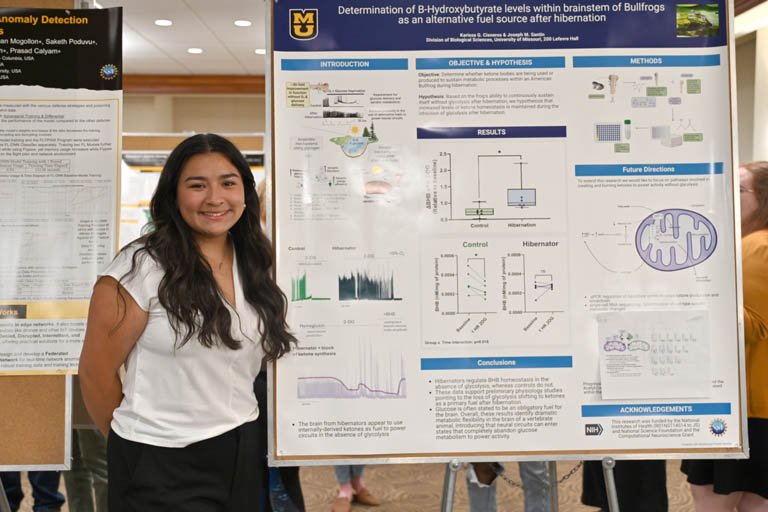
“Quantitative polymerase chain reaction (qPCR) is really technical, so going into the lab and seeing the data on the screen showing that my research worked was amazing.”
Karissa Cisneros
Karissa Cisneros, a biochemistry student, participated in the NSF REU: Computational Neuroscience. She researched how frogs can immediately function after hibernation with alternative fuels to glucose. Future potential applications of her work include healthcare solutions to diseases such as Alzheimer’s disease, Parkinson’s disease and Amyotrophic lateral sclerosis.
“I enjoyed learning how to be in a lab and how to run a lab. It was great to see my hard work pay off.”
Dylan Student

Dylan Student, a Mizzou chemical engineering student from Springfield, Missouri, explored the adsorption of aromatic compounds using carbon nanomaterials. His goal was to investigate two materials, charcoal and granular activated carbon, as more effective ways to separate contaminants from water. He found that both were better alternatives for adsorption than activated carbon.
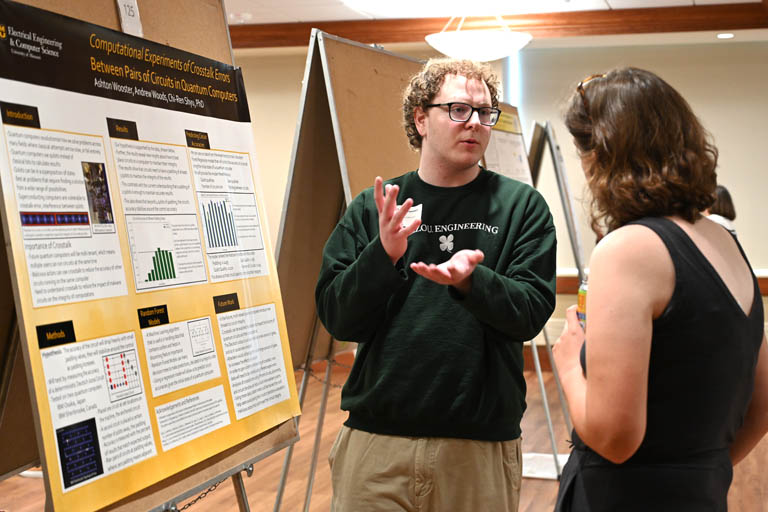
“I’ve never done anything with machine learning before, so this was a great experience for me.”
Ashton Wooster
Ashton Wooster, a Mizzou computer science and information technology student, researched quantum computers and crosstalk interference. Crosstalk interference is electromagnetic interference or physical interference between wires. Wooster said that most of the research he read recommended spacing circuits two qubits apart to minimize crosstalk, but his research indicated spacing circuits three qubits apart would lead to the least interference.
“The mentors in the CERI Center were really insightful, they helped us through some big roadblocks. Without their help we wouldn’t have gotten as far as we did”
Rohan Adepu
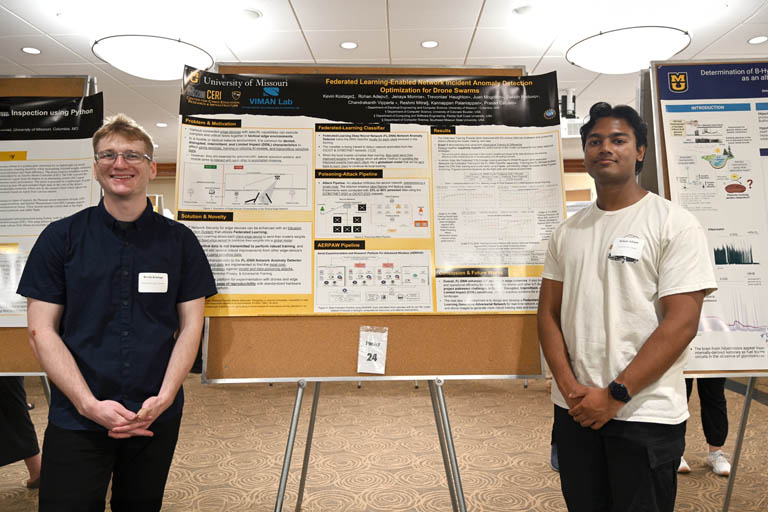
Kevin Kostage, left, and Rohan Adepu, right, both participated in the NSF REU: Consumer Networking Technologies. This summer, they worked to create a drone network with the ability to detect anomalies and defend against attacks. Kostage said the parts he enjoyed the most were creating the model and getting to use AIRPA for edge computing.
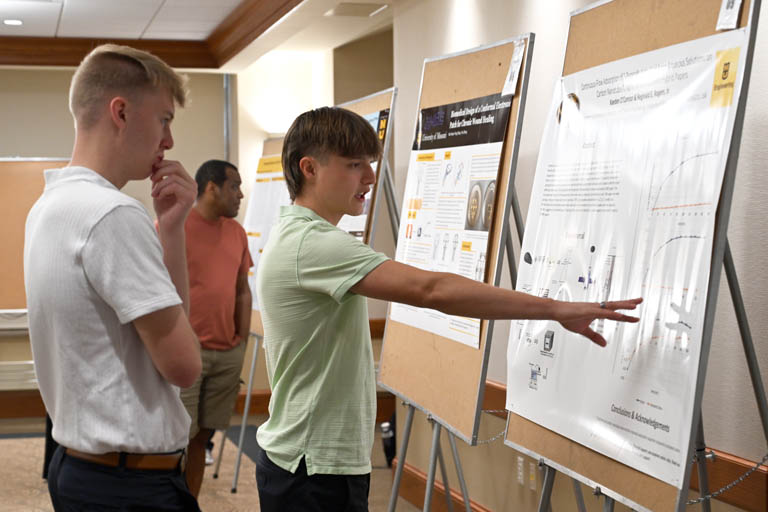
“Chemical engineering work is long and takes patience. Having other students to talk to while working was a lot of fun.”
Kaeden O’Conner
Kaeden O’Conner, a Mizzou chemical engineer from Belleville, Illinois, investigated how agricultural chemicals, such as fertilizer, affect human health and how to filter them out of water. He said that the process currently has a lot of waste, and so his project uses carbon nanomaterials to create a more effective method for filtering pollutants.
Get involved in research that can change the world as an undergraduate. Choose Mizzou Engineering!